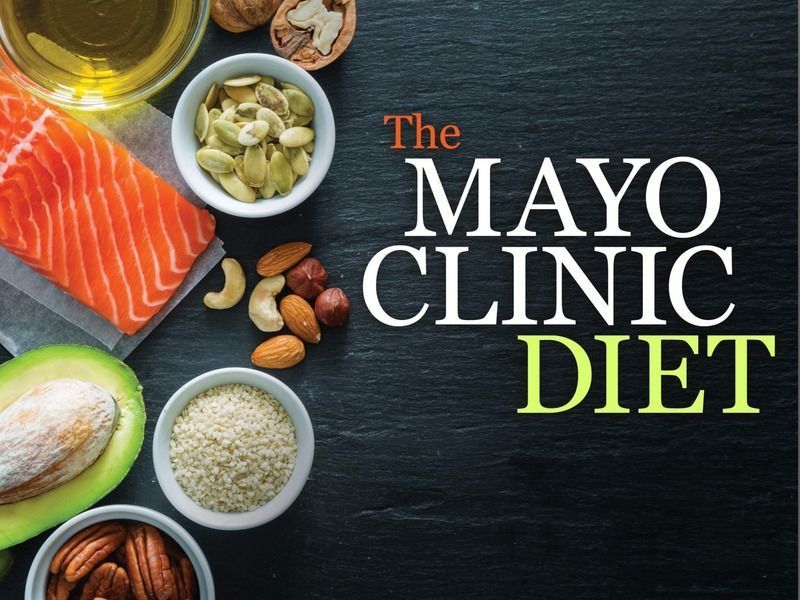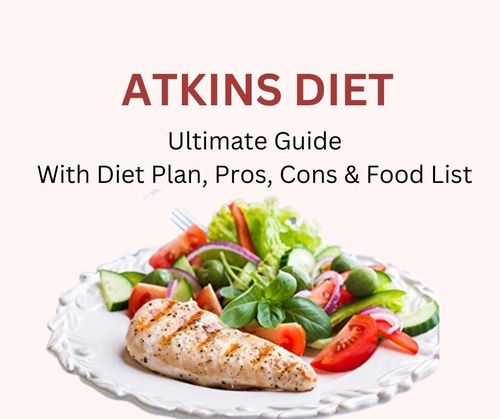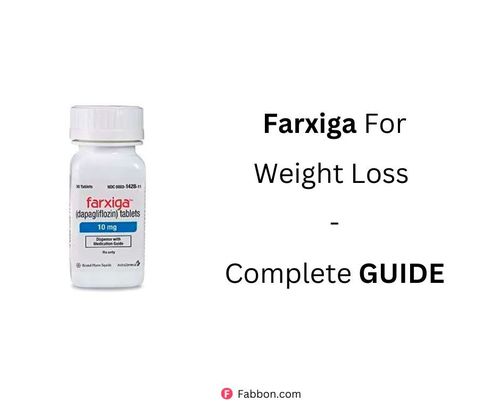Mayo Clinic Diet Foods List For All Phases - Full Guide
Pooja Angurasu
Updated At 26 Aug 23
A group of specialists in weight loss developed the long-term weight management plan known as the Mayo Clinic Diet. The programme has been upgraded and is designed to assist users in changing bad behaviours for healthy ones and reshaping their lifestyle. It's important to focus on making little, enjoyable changes that will help people achieve and maintain a healthy weight for the rest of their lives.
The Mayo Clinic Diet is based on the most recent behavioural change science, which will assist one in discovering their inner drive to lose weight, setting realistic objectives, and developing coping mechanisms.
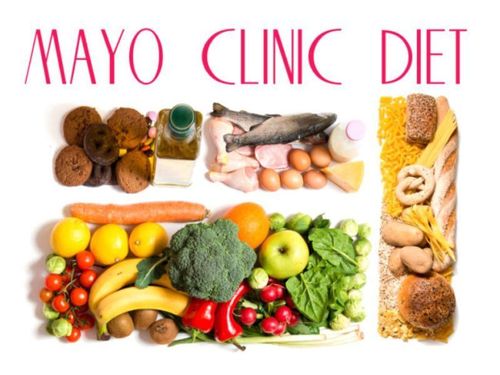
Phases Of Mayo Clinic Diet
The Mayo clinic diet has two phases:
- Phase 1 - Lose it!
- Phase 2 - Live it!
Read More: What Is Noom Diet
Mayo Clinic Diet Phase 1 - "Lose It!"
For a safe and healthy weight loss of up to 6 to 10 pounds (2.7 to 4.5 kilogrammes), this two-week phase is meant to jump-start your weight loss. During this stage, one must concentrate on lifestyle choices that are linked to weight. One can learn how to add five healthy behaviours, get rid of five bad habits, and pick up an additional five healthy habits.
Beginning to practise crucial habits that one will continue into the following part of the diet during this phase might help one experience some fast improvements, giving them a psychological boost.
Five Healthy Habits:
- Consuming a modestly big, healthy breakfast
- Consuming fruits and veggies
- Intake of whole grains
- Eating wholesome fats
- Exercising for at least 30 minutes a day, including walking
- Keeping a record of your meals
- Setting new goals and objectives
- Exercise for over an hour each day while consuming foods with little processing.
- 7 hours of peaceful sleep
- Drinking plenty of water
Five Bad Habits To Avoid:
- Eating sugar added
- Anything other than fruits and vegetables as snacks
- Eating a lot of full-fat dairy or meat
- Watching TV and eating
- Dining out unless you can adhere to the restrictions of your eating plan
Read More: Weight Loss With Farxiga
Mayo Clinic Diet Phase 1 - "Live It!"
This stage of wellness is a lifetime endeavour. One learns more about food selection, portion control, meal planning, physical activity, exercise, and maintaining healthy behaviours during this phase. Until one reaches their target weight, they may continue to lose 1 to 2 pounds (0.5 to 1 kilogram) steadily each week. This stage can also assist someone in permanently maintaining their target weight.
Mayo Clinic Alkaline Foods List
1. Hummus

The ingredients for this delicious snack include ground chickpeas, olive oil, lemon juice, and garlic.It is rich in protein, has lots of heart-healthy fats, and has a tonne of wonderful trace minerals. It comes with the extra benefit that they can lower cholesterol and contain natural compounds that can help fight cancer-causing damage, and they can be flavoured in a variety of ways.
Read More: What Is Dukan Diet
2. Papaya

A tropical fruit is papaya. The capacity of this fruit to calm the stomach and lessen the generation of stomach acids is well documented. This has the potential to greatly enhance digestion. It is rich in antioxidants, which fight free radicals that cause cancer, and vitamins B and C.
3. Hemp Oil
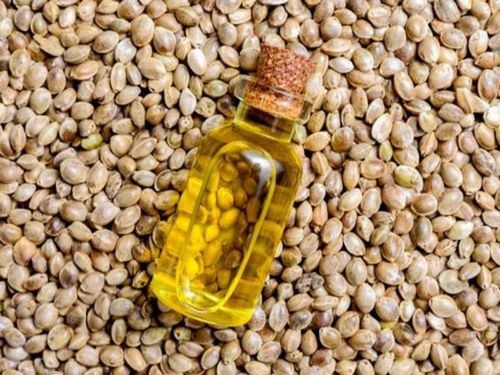
Antioxidants and vitamin E are also abundant in this oil. This makes it excellent at battling cancer-causing free radicals. It is heavy in protein, fights oxidative stress symptoms, and is frequently linked to slowing down the effects of ageing on the skin. Moreover, it contains a lot of necessary omega-3 and omega-6 fatty acids.
4. Avocado

One of the most often used condiments, toppings, and fillings is avocado. Few people are aware that they contain more potassium than the typical banana. Moreover, they contain a lot of fibre, which can decrease cholesterol. They are incredibly rich in vitamins and minerals, which also nourish the body.
5. Olive Oil
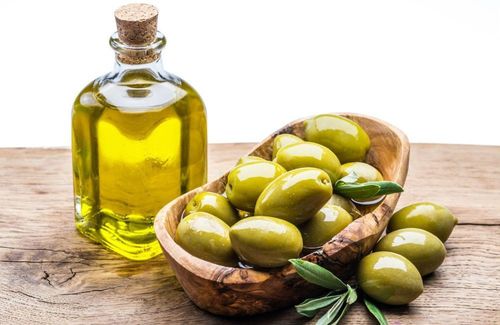
This amazing oil, which is a strong source of monosaturated fats, lowers the risk of stroke and can help avoid heart disease. Olive oil is widely known for its capacity to fight off free radicals and other oxidative effects in addition to its potential to reduce inflammation. Because it emits less dangerous compounds at higher temperatures, it can be used as a substitute for vegetable oil.
Read More: Paleo Diet For Weight Loss
6. Garlic

Garlic is a superb alkaline vegetable with many health benefits. It has long been connected to healing and medicine due to its antibacterial and antifungal properties. It is an excellent dietary addition since it contains a lot of vitamins and minerals like calcium, copper, potassium, selenium, vitamin B6, and vitamin B1.
7. Ginger

This well-known root is renowned for both its potent scent and its antimicrobial qualities. It is a potent anti-inflammatory that helps decrease blood sugar and can help with stomach problems, including nausea and morning sickness. It can also aid in easing muscular discomfort if one has been performing demanding work.
8. Lettuce

In addition to being alkaline, lettuce also contains many crucial trace minerals. They consist of the minerals phosphorus, calcium, iron, potassium, sodium, zinc, and magnesium, as well as the vitamins B6, K, riboflavin, niacin, folate, C, and A. Also, studies show that compounds in lettuce can help manage anxiety and boost mood.
9. Carrots
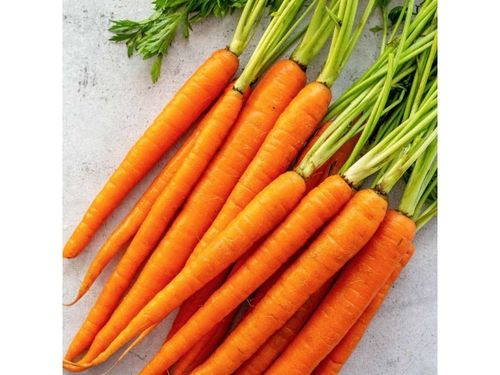
Carrots, a vegetable high in fibre, are well known for their starchy, fibrous body. It has great antioxidant characteristics and is abundant in pantothenic acid, folate, potassium, iron, copper, and manganese. Carrots may be prepared in a variety of ways and are a great addition to any meal. Studies have revealed that carrots can prevent some types of macular degeneration, which is frequent as people age and has long been linked to the improvement of eyesight if one is weak in beta-carotene and vitamin A.
Read More: What Is Keto Diet
10. Rhubarb
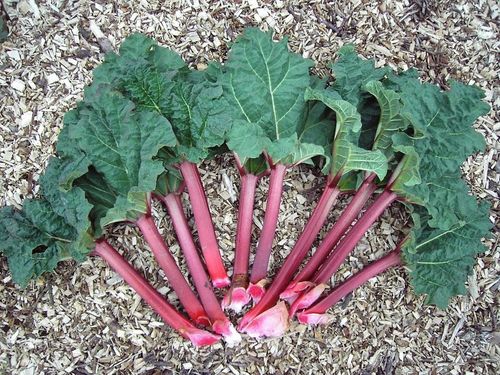
A bright green vegetable known as rhubarb is teeming with several vitamins and essential trace minerals. It is a fantastic addition to any salad mix, an excellent source of dietary fibre, and has been linked to weight loss due to its incredibly low calorie content. Its capacity to aid in constipation, which can stop other disorders of the colon from growing and becoming hazardous, is another of its great qualities.
11. Herbal Tea
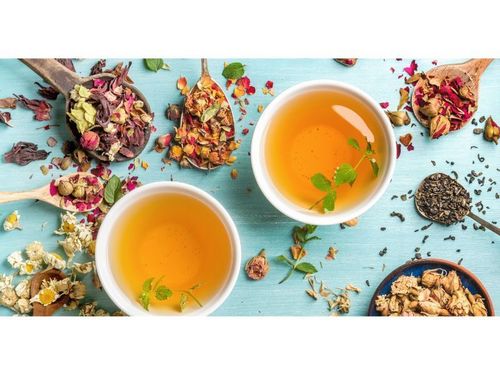
2000 years ago, tea was used for medical purposes. Due to their high vitamin content, herbal teas have been shown to nourish due to their ability to aid in healing, promote emotional wellbeing, and induce tranquilly and sleep. Teas also work wonders for the body's ability to stop bone deterioration brought on by ageing. One can maintain their energy levels throughout the day and strengthen their immune system by consuming at least two cups of tea every day.
12. Cauliflower

This intriguing vegetable contains a significant quantity of choline, a crucial B vitamin for brain function, and is extremely anti-inflammatory. It has been demonstrated in studies that it can slow the rate of aging-related brain decline. Moreover, it is a great source of phytonutrients and antioxidants, which help the body combat free radicals.
13. Celery

A plant with a lot of fibre, celery has a long history of use as an anti-high blood pressure remedy. It has strong antioxidant and anti-inflammatory properties. Celery also contains a lot of vitamins and trace elements. The potential of celery to promote liver functioning is yet another astounding celery impact. It accomplishes this by encouraging the liver to create enzymes that clean the liver.
14. Coconut

This fruit with a tough shell is loaded with health advantages. By its ability to promote suppleness and combat oxidative stress, coconut has a history of enhancing skin. Due to its strong antiparasitic and antibacterial qualities, it is also fantastic for your immune system. Moreover, coconut can aid in better food digestion and facilitate the body's assimilation of essential nutrients.
15. Lemon Juice
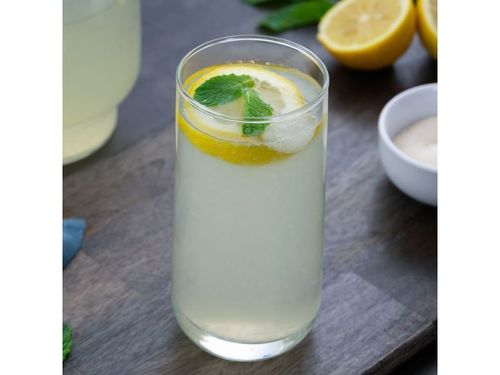
Lemon juice helps to neutralise uric acid levels, making it a wonderful approach to stimulating liver function. Lemon juice can help dissolve numerous chemicals that form plaque on the intestinal walls and can encourage the intestines to have a bowel movement if one drinks at least one glass of lemon juice every day.
16. Green Beans

Green beans are another highly antioxidant and anti-inflammatory meal with numerous health advantages that go beyond being a staple diet for some civilizations. It has been shown that eating green beans can significantly lower the odds of developing heart disease. This is thought to be caused by the abundance of flavonoids. Another excellent source of antioxidants is green beans.
17. Tomato

Due to their high lycopene content, tomatoes have a strong antioxidant profile. Lycopene is particularly good at stopping several types of risky oxidation that can result in a number of diseases and disorders. The capacity of lycopene to inhibit fat buildup in veins and arteries is one such impact that has been researched. Heart disease and artery blockages that might result in stroke are primarily brought on by these free-floating fats. In postmenopausal women, tomatoes are also beneficial for bone growth.
18. Cherries
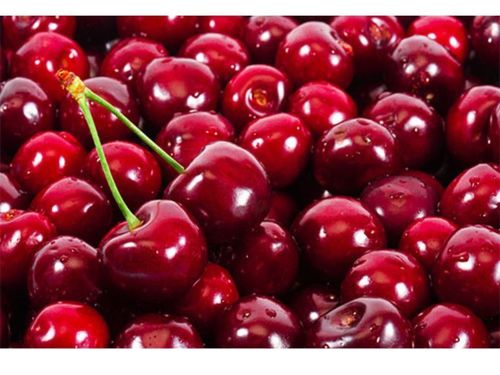
Cherries are a wonderful natural source of melatonin, a hormone that your pineal gland produces. According to scientific research, eating cherries or consuming cherry juice can significantly increase your ability to sleep for longer periods of time. Another antioxidant that can aid in the fight against free radicals is melatonin. Cherries contain potent, naturally occurring anti-inflammatory compounds in abundance.
19. Radishes
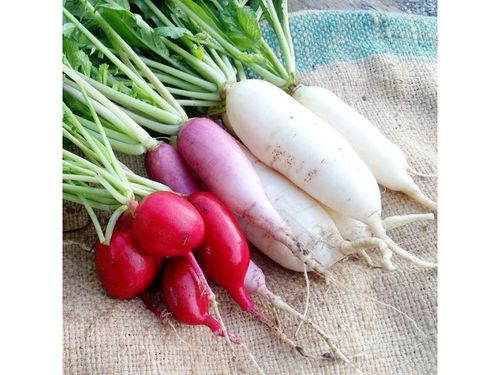
Radishes are well known for their ability to chill the body. There are also diuretics, which aid in flushing toxins from the body by causing them to be excreted in urine. They are rich in trace elements and vitamin C.
20. Banana
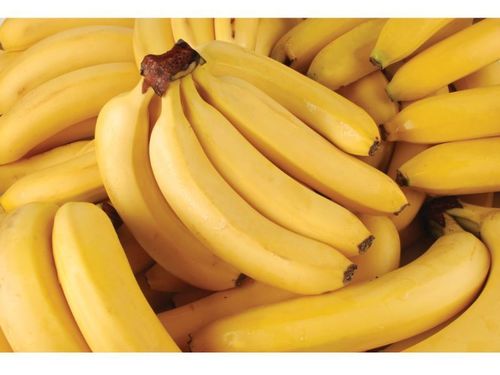
This yellow tree fruit is a powerhouse of vitamins and fibre. It provides a good amount of nutrition but fewer than 120 calories. They are quite filling, contain a lot of fibre, and can aid in healthy elimination. One will feel more satisfied and full as a result of the absorption and high fibre content.
Mayo Clinic Healthy Food List
1. Almonds

- Sources of fibre, vitamins, minerals, and other nutrients that are good or exceptional
- High in phytonutrients and anti-oxidants, including beta-carotene, vitamins A and E, and other substances.
- May aid in lowering the risk of heart disease and other medical issues.
- Easily accessible
2. Apples

- Soluble fibre, which is abundant in apples and can lower blood cholesterol and glucose levels, and Vitamin C, an antioxidant that shields the cells in your body from deterioration, are also abundant in fresh apples.
- It promotes the formation of collagen in connective tissue, maintains the health of your capillaries and other blood vessels, and facilitates iron absorption.
3. Blueberries

- Researchers have found that blueberries are rich in phytonutrients, which may help protect against chronic illnesses including diabetes, heart disease, and some types of cancer.
- Moreover, blueberries may enhance short-term memory and support healthy ageing. With 2.7 g of fibre and 10.8 mg of vitamin C per 3/4 cup of fresh blueberries, they are a low-calorie source of both fibre and vitamin C.
4. Broccoli

- In addition to having a lot of folate, broccoli also has phytonutrients.
- Moreover, broccoli is a great source of vitamin C, an antioxidant that guards the cells in your body from harm.
- It has been related to maintaining eye health and is a great source of vitamin A.
5. Red Beans
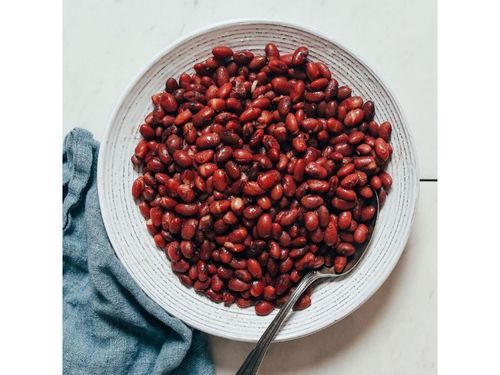
- Red beans, notably dark red kidney beans and little red beans, are a good source of potassium, phosphorus, and iron.
- They are also a great low-fat source of fibre and protein. Phytonutrients are also present in red beans.
- Don't you enjoy red beans? To reap the health advantages of beans, use another variety.
6. Salmon Fish
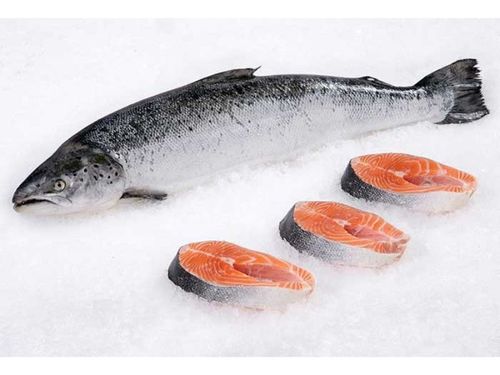
- Omega-3 fatty acids, a type of fat that lowers the risk of blood clots that could result in heart attacks, are found in salmon.
- Omega-3 fatty acids also aid in lowering triglyceride levels, slowing the development of artery-clogging plaques, and slightly lowering blood pressure.
- They may also protect against irregular heartbeats that may result in sudden cardiac death.
- Salmon is a healthy source of protein, is low in saturated fat and cholesterol, and contains omega-3 fatty acids.
7. Spinach

- The vitamins A, C, and folate are abundant in spinach.
- It is also a good source of magnesium. Spinach's plant-based components may strengthen your immune system.
- Beta carotene, lutein, and zeaxanthin, the carotenoids included in spinach, also offer protection against heart disease and some types of cancer, as well as age-related vision disorders like macular degeneration.
8. Sweet Potatoes

- Sweet potatoes' rich beta-carotene content is indicated by their bright orange-yellow colour. Dietary supplies of beta carotene, which your body converts to vitamin A, may aid in slowing the ageing process and lowering your chance of developing some malignancies.
- Sweet potatoes are a fantastic source of vitamins A and C, as well as fibre, vitamin B-6, and potassium.
- Like all vegetables, they are also relatively low in calories; a large sweet potato has only 81 calories in one-half of one.
9. Tomato Juice
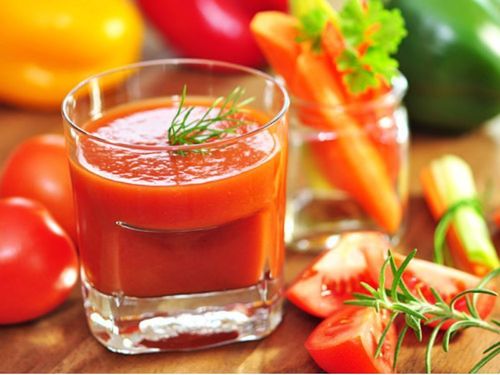
- Vegetable juice is a simple way to include more veggies in your diet because it contains the majority of the vitamins, minerals, and other elements contained in the original vegetables (apart from some of the fibre).
- Lycopene, an antioxidant found in tomato juice and tomato-containing vegetable liquids, may lower the risk of prostate cancer.
- Make sure to use low-sodium juices since certain tomato and vegetable juices contain a lot of salt.
10. Wheat Germ

- The portion of the grain known as the wheat germ is what causes the new plant to sprout and develop.
- Although it makes up a minor portion, the germ is packed with nutrients. It is a rich source of folate, magnesium, phosphorus, and zinc, and a very good source of thiamin.
- Protein, fibre, and some fat are also present in the germ. Consider adding some to your cold or hot cereal.
Mayo Clinic Diet Food Pyramid
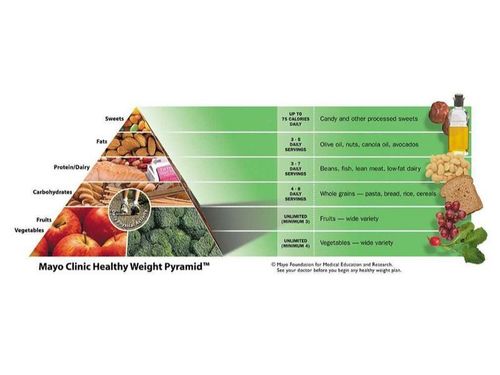
By demonstrating how to calculate portion sizes and organise meals, the Mayo Clinic Diet makes healthy eating simple. One doesn't have to be exact when counting calories for the programme. Instead, one will consume delicious foods that will fulfil them and aid in weight loss.
In order to help you consume foods that are filling but low in calories, Mayo Clinic scientists created the Mayo Clinic Healthy Weight Pyramid. The food pyramid's food groups place an emphasis on foods that are good for your health. Because they are good for your health and weight, vegetables and fruits are encouraged in the pyramid to be consumed in almost unlimited quantities.
The key takeaway is straightforward: Eat more of the food groups at the base of the food pyramid and less of the groups at the top.
First Tier
It is strongly advised to consume unlimited amounts of fruits and vegetables. According to Dr. Hensrud, the New Mayo Clinic Diet supports practically unlimited consumption of fruits and vegetables, so participants won't experience hunger pangs while following the plan.
Second Tier
The second tier is made up of second tier carbohydrates. These foods should be consumed in moderation and include brown rice, oats, whole grain pasta, and whole wheat bread.
Third Tier
The third emphasis group, which includes dairy and protein, should be consumed in moderation. Legumes, fish, lean meat, and low-fat dairy products are a few examples of nutritious protein sources.
Fourth Tier
Fourth Tier Good fats, such as those found in avocados, almonds, canola, and olive oil, may be used sparingly.
Fifth Tier
The New Mayo Clinic Diet does not restrict Fifth Tier Candy or other processed sweets, but they should only be consumed occasionally and in moderation.
Mayo Clinic Diet Foods Based On Mayo Clinic Food Pyramid (Sample Diet Plan)
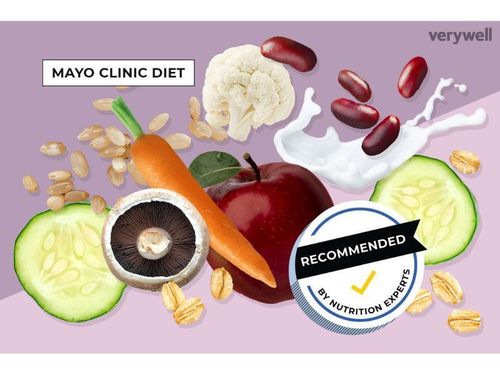
The Mayo Clinic Healthy Weight Pyramid is followed by this sample daily menu. You can fit servings from each category of the healthy weight pyramid into the sample dinner. The menu can be customised to your preferences and calorie requirements.
An illustration of a 1,200 calorie menu
Breakfast
- 1 little banana
- 12 cup cereal with bran
- 1 cup of milk without fat
- Flavoured tea
Lunch
- 4 ounces of sliced turkey breast, 1 tablespoon low-calorie mayonnaise, a tomato slice, leaf lettuce, and 2 slices of whole-grain bread make up a turkey sandwich.
- 2 cups raw bell pepper strips, jicama, and tiny carrots
- 1 little apple
- Water
Dinner
- Beef tenderloin cutlet, 2 ounces, grilled
- Steamed green beans, 2/3 cup
- With 1 teaspoon of trans-fat-free margarine, combine 3 baby potatoes.
- 2 cups of butterhead lettuce (Bibb, Boston, etc.) or leaf lettuce, together with 1/2 cup of cherry tomatoes, and 2 tablespoons of fat-free salad dressing, are used to make the salad.
- Lemon sherbet, one-third cup
- sparkling lemon water
Snack (any time)
- 1 little pear
Mayo Clinic Diet Foods List

Grains And Fruits
- Fruit in a can, fresh fruit (packed in their own juice or water)
- The frozen fruit
- Fresh vegetables that have been chopped beforehand
- Frozen-dried veggies (no sauce)
- Tomato sauce without fat and salad in a bag
- Juice made entirely of fruit (limit yourself to 4 ounces a day)
Full Grains
- Whole-grain rice cereal for breakfast (brown, wild, blends)
- Wheat bread with muesli
- Pita made of entire grains
- Complete-grain pasta
Proteins
- Proteins include skinless white meat poultry, soy cheese, low-sodium water-packed tuna, black, kidney, or navy beans, and low-fat refried beans.
- Yoghurt that is made from milk and is minimally fat or has no fat.
- Low-fat or fat-free cheese low-fat or fat-free milk or 1%
Frequently Asked Questions (FAQs) On Mayo Clinic Diet
1. What foods are on the Mayo clinic Diet?
Foods recommended by the Mayo Clinic, which include plenty of fruits, vegetables, whole grains, nuts, legumes, seafood, and healthy fats.
2. Is the Mayo clinic diet online free?
Without any assistance, one can adhere to the Mayo Clinic Diet by reading the book. Although the Mayo Clinic website offers some tools and tips for weight loss that are free, one must pay $65 for the first 13 weeks of access in order to take full advantage of the online support services.
3. What are the 20 foods in the 20/20 diet?
- Coconut oil
- Green tea
- Mustard
- Olive oil
- Almonds
- Apples
- Chickpeas
- Dried plums
- Prunes
- Leafy greens
- Lentils
- Peanut butter
- Pistachios
- Raisins
- Yogurt
- Eggs
- Cod
- Rye
- Tofu
- Whey protein powder
4. What are the top 5 foods for weight loss?
- Blueberries
- Walnuts
- Wild Salmon
- Oats
- Avocados

